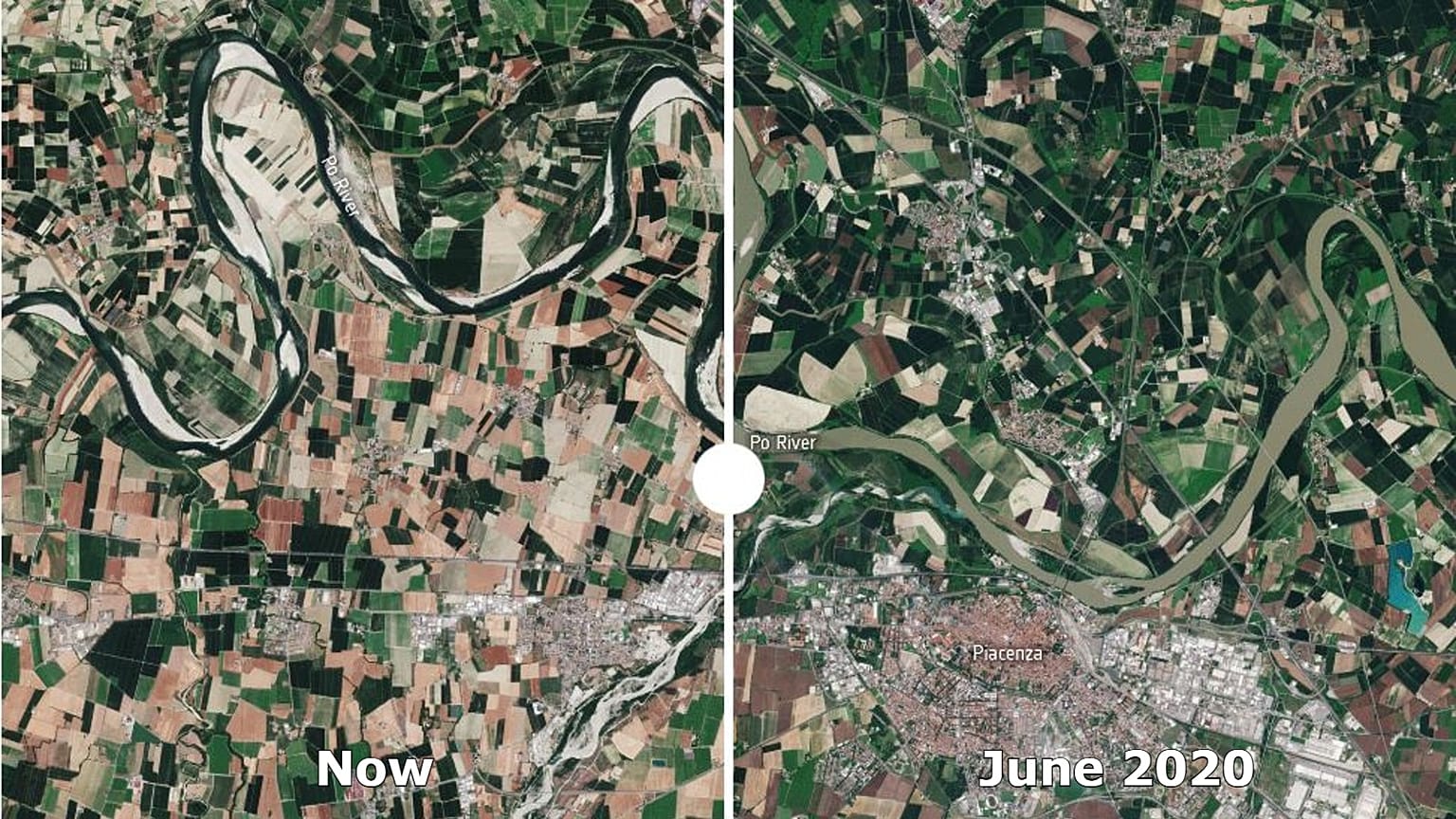The Po River valley in northern Italy is in the grip of its worst drought for 70 years. These pictures help show just how bad it has become.
New satellite images have highlighted the extent of a record drought in northern Italy.
The photographs, released by the European Space Agency (ESA), compare the Po River now with two years ago.
With barely any rainfall for around four months, the river is seven metres lower than usual, according to the Po River District Basin Authority.
The images, taken by a satellite from the European Union's earth observation programme, show relatively high water levels in June 2020.
Two years later, there are large expanses of sand visible in the river near Piacenza.
The drought -- the worst since 1952 -- is having unprecedented effects: drinking water is being rationed in 125 municipalities across the region and crop irrigation threatened in the most densely populated and intensively farmed area of the country. Lake Maggiore is close to its lowest level since 1946.
The Po River, Italy's longest, stretches from the Alps in the northwest to the Adriatic Sea in the east. It's not only the lack of rainfall that is a problem. ESA says high temperatures and a lack of snow in the mountains that feed the river are also worsening the situation.
The Po Valley is a key agricultural area in Italy, producing around 40% of the country's food, including wheat, rice and tomatoes.
Farmers are struggling to keep crops irrigated, according to the ESA, and many towns in the valley have been asked to ration water.
Added to this scenario is that the Adriatic Sea along the delta of the river has gone 21 kilometres (13 miles) inland, making the water more saline and putting at risk the crops taking in water from the basins for irrigation.
"Agriculture is consuming up to 70% of freshwater and considering the increasing water scarcity the use of water needs to be more efficient in this sector," said Benjamin Koetz, head of ESA’s Sustainable Initiatives Office.















